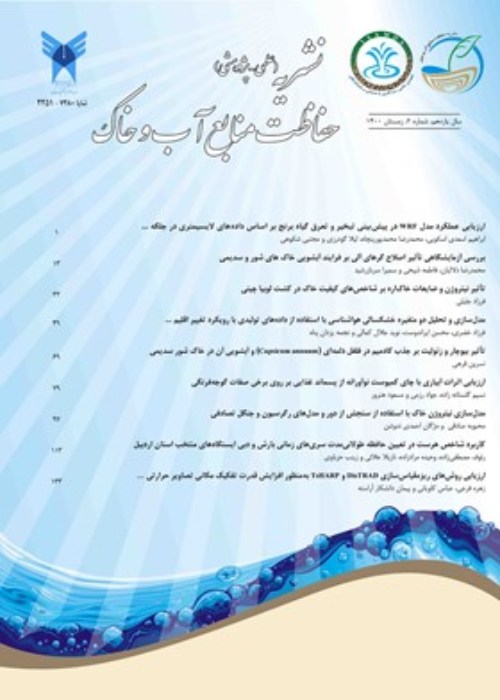Modeling and Bivariate Analysis of Meteorological Drought Using Data Generation with Climate Change Approach (Case Study: Lake Urmia)
Climate Climate change is one of the important factors that will affect different parts of human life on the planet and will have detrimental effects on the environment, socio-economic, and especially water resources. Knowledge of climate change can provide comprehensive plans in various areas of management regarding the monitoring of droughts and their potential risks. Drought can occur in any area, even wetlands. This phenomenon depends on various factors and parameters and one of the most important symbols of this phenomenon is the occurrence of drought is a decrease in rainfall and therefore the analysis of precipitation data is of special importance to study drought. The purpose of this study is to analyze drought variables using SPI and SPImod indices and detailed functions.
In this study, to model the multivariate analysis of drought in Lake Urmia basin using RCP8.5 and RCP4.5 representative concentration pathway scenarios, data and models of atmospheric circulation of historical data (1991-2010) for three near horizons (2030- 2011), medium (2065-2046) and round (2099-2080) were simulated and produced. Then, using SPImod index and copula functions, drought multivariate analysis was performed in MATLAB software environment. In general, first, using the mentioned indicators (two indicators, SPI and SPImod), the characteristics of drought intensity and duration were extracted, then, using coding in MATLAB software environment, eight families of Archimedean detailed functions were used.
The results of multivariate analysis showed that the Joe copula function is the best copula function for drought multivariate analysis (For analysis of both severity and duration of drought for the study area). Also, the results of probability and the joint return period showed that in the coming periods, at least droughts of the same level as historical droughts and even more severe will occur. Thus, by studying the period of combined and conditional returns and Kendall, the results showed that at a certain critical probability level, the amount of Kendall return period is much more than the standard return period, so that this difference increases with increasing that certain amount.
The results obtained with the climate change approach on the meteorological drought of Lake Urmia showed that in the coming periods we will see an increase in temperature, which will affect the rate of trade in the region and water resources, on the other hand, because the data Meteorology and hydrology are used to calculate the types of droughts, so droughts affected by climate change will be so that in future periods 46% to 48% of the months will be dry in different horizons. Finally, the results of the time series of indicators showed that during the statistical period at least 40% of the months were dry and this intensity of droughts in the Urmia station is much higher than others. The modified SPI largely eliminates the disadvantages of conventional SPIs and takes into account seasonal variations in precipitation in the calculation of the SPI index.
- حق عضویت دریافتی صرف حمایت از نشریات عضو و نگهداری، تکمیل و توسعه مگیران میشود.
- پرداخت حق اشتراک و دانلود مقالات اجازه بازنشر آن در سایر رسانههای چاپی و دیجیتال را به کاربر نمیدهد.



